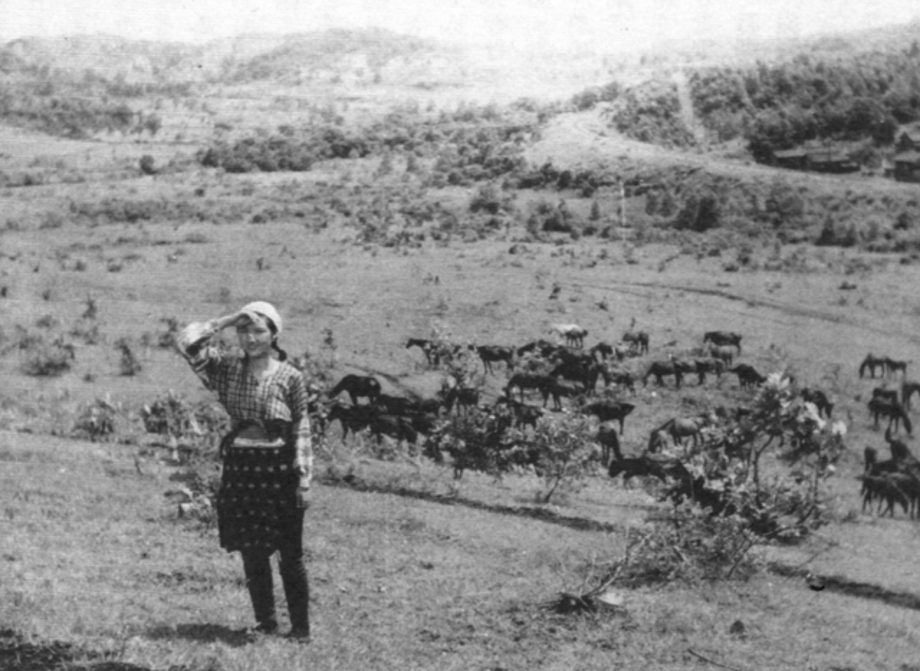
We all know that Hayao Miyazaki is deeply obsessed with airplanes, blimps, or any machinery of aviation. This obsession reveals itself as various flying objects in his works. Sometimes, they are merely products of his imagination, such as Möwe in NAISICAÄ OF THE VALLEY OF THE WIND, the castle in HOWL’S MOVING CASTLE, or Kiki’s broom in KIKI’S DELIVERY SERVICE, but in many cases, his obsession with early aviation history manifests, as amphibians and speed planes in PORCO ROSSO. He likes to draw large biplanes, triplanes, or any other exotic airplanes from the first half of 20th century, paying extra attentions to details. He painstakingly animates this sense of ‘lift’, weightlessness at takeoff, or sense of wonder during flying. So, it is no surprise that Hayao Miyazaki’s new film is based on the true story of Jiro Horikoshi, the legendary Japanese aircraft designer. It has been debated, however, how Miyazaki would handle the most critical topic about this hero of Japanese aviation technology: he designed many of the successful fighter airplanes during Sino-Japan War and Pacific War, including Mitsubishi A5M fighter, ‘Claude’ and A6M fighter, ‘Zero’. The latter has gained notoriety for being the instrument of military madness; they were the symbol of Kamikaze attacks in the last days of the Pacific Theatre. We speculated how Miyazaki, known for his strong pacifist philosophy, would handle this topic, especially when the current political climate in Japan is leaning toward ‘re-militarization’, i.e. enabling ‘the right of collective self-defense’. In essence, his inner child loves to draw planes, to animate them, and to make them fly in his imagined world, while his adult mind tells him they are the devilish instruments of mass murder. How does he resolve this conflict?
Well, he didn’t. Sort of. And come to think of it, he didn’t have to.
KAZE TACHINU starts with Jiro’s encounter with the pioneer of aviation, Giovanni Battista Caproni, in his dreams. This encounter in Jiro’s dreams recurs throughout the film, and the fabricated Caproni becomes Jiro’s inspirational mentor. His life trots through the turmoil of 1920’s and 1930’s: Great Kanto Earthquake, Depression, road to fascism and subsequent war. Jiro, always a polite young man with thick glasses, is described as a a cool-headed genius of aviation technologies, rarely expressing interests in politics beyond a few words. The main plot is tied to the romance between Jiro and Naoko, a young lady Jiro meets in a fashionable resort hotel during vacation. We feel the ethical theme of conflict between love of aviation (Jiro’s life is aviation) and creating the weapon, but just the feel. Rather, it is more appropriate that we see the world through the narrow view of Jiro’s, concentrating on his own life, his own job, and his own obsession. Strange feel of detachment, slightly disorienting sensation, like breathing through the womb of daydreams lingered after. I don’t know, but I always feel Miyazaki creates the intricately-built world of imagination, which ends where his pen stops. Nothing beyond. It is his powerful narrative that puts us into this cardboard world. It continuously fascinates us, and overwhelms us.
This is the most beautiful animation ever put on the screen. It was produced with meticulous care, stroke by stroke, with little aid from modern visual effects technologies. Even the last credit rolls are written by hand, so each character is different. Clouds are painted with brushes, not by the 3D modeling of vapors. Noises of airplane engines were done with human voices, not with the synthesized sounds. Miyazaki and Ghibri tried very hard to create imagination, not an entertainment. This is the labor of love. This would have never been done in Hollywood. This would have never been done in any other Japanese anime studios. Hideaki Anno, who supplied the voice of Jiro, himself said he wouldn’t make this kind of film. In a sense, KAZE TACHINU is the ultimate result of evolution of old-school animation. That’s why I wonder where Miyazaki and Ghibri would go from here. More than twenty years ago, Miyazaki said, “they should quit making those animes with a girl blustering a machine gun implanted in her arm”. Well, they didn’t. These animes are produced one after another, consumed one after another, and reproduced one after another. Miyazaki is still trying very hard to create something that is not meant to be consumed. But the problem is, we, consumers, devour everything. Like No Face in Miyazaki’s SPIRITED AWAY.
The Wind Rises (風立ちぬ, 2013)
Written and Directed by Hayao Miyazaki
Produced by Toshio Suzuki
Ghibri
Copyrighted materials, if any, on this web page are included as “fair use”. These are used for the purpose of research, review or critical analysis, and will be removed at the request of copyright owner(s).
